Wind Project Off Rockaway Could Help Power New York's Future
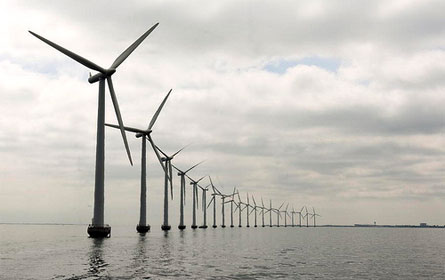
Since April, New Yorkers have watched two environmental disasters in two different parts of the country with sadness and horror. On April 5, an accident at the Upper Big Branch coal mine in West Virginia killed 29 people. And, on April 20, 11 people died in the Deepwater Horizon explosion -- a disaster that has sent as much oil spewing into the Gulf of Mexico every four to five days as was spilled in the Exxon Valdez accident of 1989. Both these events provide potent reminders of the dangers and risks of our addiction to fossil fuels to power our vehicles, homes and businesses. If New York needed a wake-up call for cleaner energy sources, these two accidents should ring our alarms loudly and clearly.
Amid this flood of disastrous environmental news, one piece of progress was reported on April 28. On that date, the U.S. Department of Interior approved the first-ever, utility-scale offshore wind energy project -- the Cape Wind project in Nantucket Sound -- after a nine-year federal review process. This process lasted longer than anybody expected, but was necessary to ensure that the groundbreaking project would properly protect the marine habitat while effectively harnessing the renewable wind available at the site.
In contrast with West Virginia's coal and the Gulf of Mexico's oil, wind power is a renewable resource that can reduce the carbon dioxide emissions that cause global warming. Unlike burning coal in power plants or using oil to power our vehicles, wind farms do not emit particulate soot, nitrogen oxides, and other toxic pollution that triggers asthma emergencies, cancer, heart attacks and premature deaths. And of course, wind power is free of the environmental destruction that follows when things go wrong in the fossil fuel exploration business.
New York is one of the leading states for wind power in the nation --- and its growth is just taking off. As of the end of 2009, existing projects contributed 1,274 megawatts of capacity to our power grid, ranking New York eighth in the nation in terms of existing wind energy capacity. Perhaps most significantly, roughly 850 of these megawatts have come online in the last two years.
Upstate New York's wind projects are much smaller than Cape Wind or a typical coal-burning power plant – they range from 20 to 126 megawatts, in contrast to the 420 megawatts planned for Cape Wind and the 667 megawatts generated by the typical coal plant. In order for wind power to replace a significant amount of fossil fuel energy, New York's nascent wind industry has to move toward utility-scale projects on the scale of Cape Wind and other projects that have been proposed elsewhere along the eastern seaboard.
Wind at Sea
A utility-scale offshore wind facility has several advantages over smaller, land-based wind farms upstate. First, ocean-based wind power is stronger, more consistently available, and could be situated closer to Long Island and New York City electricity customers. Second, unlike ocean-based wind power, the availability of land-based wind power tends to decrease during the hottest part of a summer day, which coincides with the times of peak electricity demand in the downstate region. Third, because ocean-based wind power would be closer to consumers, transmission costs should be lower than remote, land-based wind power sources. Of course, community concerns about visibility of the turbines from shore, the need for new or reconfigured transmission lines, and any potential impacts on birds or marine life have to be addressed, and any significant environmental impacts must be identified and mitigated.
The Long Island Power Authority, the New York Power Authority, the Metropolitan Transportation Authority, the Port Authority, the New York State Energy Research and Development Authority and the city’s Economic Development Corp. have teamed up with Con Edison to explore the possibility of a utility-scale wind development that would be located roughly 13 nautical miles off the Rockaway Peninsula in the Atlantic Ocean.
The concept for the offshore wind project emerged from Gov. David A. Paterson’s Renewable Energy Task Force and is consistent with the governor’s “45 by 15” program, which set a statewide goal that the state must meet 45 percent of its electricity needs through improved energy efficiency and renewable sources by the year 2015.
The group is considering a wind project that would generate up to 350 megawatts of power initially, building up to 700 megawatts. At this scale, the project would be the largest offshore wind project in the country --- and would remove carbon dioxide gases equivalent to removing 68,000 cars from our region's roads annually. Operating at 30 percent of its capacity, a 700 megawatt project would generate enough energy for a half million homes.
Like Cape Wind, the path to developing this project will be filled with many procedural steps. In June 2009, the project's sponsors issued a “Request for Interest” that sought to gauge industry interest in the project. The responses to that request now are being used to create a “Request for Proposals” (RFP) that should be released soon. At that stage, New Yorkers will get a clearer sense of the exact location, cost and other details of the various proposals that will be considered. A joint Long Island Power Authority/Con Edison feasibility study has already concluded that, with upgrades to their existing transmission systems, the project could connect to up to 700 megawatts of offshore wind power to the power grid . Toward that end, an application to “interconnect” the offshore project has been filed with the New York Independent System Operator, the operators of the state’s power grid, to supply up to 700 megawatts by 2015.
By itself, wind power -- whether utility-scale offshore projects or generated in smaller projects upstate -- will not be sufficient to wean ourselves from our addiction to dirty fossil fuels. Combined with cleaner, more efficient power plants; increased efficiency in our buildings, appliances, and vehicles; and as part of an array of renewable fuels that includes increased solar power and advanced biofuels, wind power can be a significant part of our long-term climate and energy solution. As we continue to watch the Deepwater Horizon disaster unfold and learn more about the dangers and risks of coal mining and coal-fired power plants, the potential benefits of each of these strategies need to be explored fully.
Rich Kassel is a senior attorney at the Natural Resources Defense Council, where he focuses on urban air pollution and transportation issues. He also chairs the Tri-State Transportation Campaign, a regional transportation advocacy organization; is on the board of the New York League of Conservation Votes and blogs on a variety of environmental issues on the NRDC Switchboard.
Can the City -- and the Oyster -- Save Jamaica Bay?

The largest urban wildlife preserve in the United States sits adjacent to Kennedy Airport, near the high-rise apartments of Starrett City and the Rockaway housing projects. Home to the peregrine falcon, the loggerhead sea turtle, the short-eared owl, the area -- Jamaica Bay -- at the intersection of Queens, Brooklyn and Long Island, serves as a stopover for 20 percent of American bird species on their annual migration along the East Coast.
For years, though, this estuary, a shallow marsh where fresh and saltwater meet, has been vanishing into the toxic waters of the New York City harbor, losing an estimated 33 acres annually to deterioration, nitrogen buildup and rising sea levels. Spanning some 16,000 acres about a century ago, the salt march islands have shrunk to a mere 800 acres. Thought not nearly as dramatic as the environmental catastrophe now confronting the Louisiana coast, the threat to Jamaica Bay could completely destroy the marsh by 2024, decimating the home for an abundance of rare and endangered plants and animals.
"Marshland completely changes the nature of the bay," says Larry Levine, staff attorney for the Natural Resource Defense Council. "If it were to ever disappear and become open water, it would be a tremendous loss of natural habitat."
Now, the federal state and city governments, prodded by citizen's groups, have stepped up their efforts to preserve the area. This year, government and private groups collaborated to update the Jamaica Bay Watershed Protection Plan to try to avert disaster in the urban refuge. Whether government will keep its commitment and whether its actions can reverse the decades of deterioration remains to be seen.
[For more on efforts to revitalize New York's waterfront, go here.]
Destruction of an Ecosystem
Spartina cod grass anchors the land of the marsh in place. To survive, the grass must receive fresh water rich with oxygen and nutrient-loaded sediment. Small streams in Queens and Brooklyn once provided this, but many of these vital veins have been paved over the decades.
Four sewage plants ringing Jamaica Bay contribute further to the deterioration of the marsh by spewing 250 million gallons of nitrogen and large amounts of chlorine into the water every day. Ironically the nitrogen has worsened since 1992 when the government, in an effort to prevent pollution, banned the dumping of sewage into the ocean and instead diverted the treated wastewater into the bay. The excess nitrogen in the water is naturally converted into hydrogen sulfide, which kills the roots of the marsh grass.
In this nitrogen-rich environment, weed-like algae blooms thrive, suffocating the estuary by draining it of dissolved oxygen. Algae blooms kill the thousands of fish found floating belly-up in the very waters that are meant to nourish them.
In addition, during heavy rains, untreated oils and toxins wash from nearby streets and parking lots when storm drains overflow and end up in the bay. The bay also shares many of the contaminants that pollute the rest of New York harbor, such as dioxins, PCB particles, and mercury.
"The New York harbor is a wasteland," said Jeff Levinton, professor of marine ecology at SUNY Stonybrook.
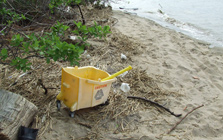
Next-generation issues also are emerging, explained Levine. Studies show that Jamaica Bay flounder are affected by pharmaceuticals flushed through the sewage system and not removed by treatment plants. The population of male flounder has drastically diminished because of the feminizing effects of endocrine-disrupting chemicals -- a pattern Levine says is being observed around the world.
Sounding the Alarm
Dan Mundy, founder of citizen group EcoWatchers, noticed that Jamaica Bay was ailing in the mid 1990s. By 2000, he said, as many as 50 acres of saltwater marsh were being lost every year. And in 2002, the state authorized a study of why the marshland might be vanishing.
It was not until 2005, though, that Mayor Michael Bloomberg signed a measure calling for the city Department of Environmental Protection to devise a plan to save the bay and creating a seven-person advisory task force. The committee included community activists and representatives of nonprofit organizations and government agencies. The resulting report presented a number of options, including installing storm sewers for flood prevention, dredging and re-contouring creeks, restoring eroded land, re-oxygenating the water and hiring pump-out boats to clean waste. Overall, the committee wanted visitors to Jamaica Bay and the government to be more vigilant of the estuary's condition.
Gradually, steps to restore and preserve the marsh began. Between 2006 and 2007, the U.S Army Corps of Engineers allocated $13 million to restore Elders Point East, an island marsh which once spanned 132 vegetated acres, but which had broken apart to a mere 21 acres.
While activists applauded many of these efforts, a number of them faulted the city for failing to do more to reduce nitrogen levels in the bay. For years city officials maintained that little evidence linked the disappearance of the marshes and nitrogen levels in the bay and balked at spending millions and millions of dollars to address the nitrogen levels.
By 2010, New York City faced a possible lawsuit under the federal Clean Water Act. The threat spurred intense negotiations between citizen groups, the Department of Environmental Protection, then Deputy Mayor Edward Skyler and other City Hall officials. The city, according to Mundy, expressed concern about the cost of the technological upgrades needed to address the nitrogen problem, but over time became convinced that the installations were necessary for the bay's survival.
"It shouldn't be a matter of economics. Not when it comes to the environment. Not when it comes to Jamaica Bay," Mundy said.
Cutting the Nitrogen
In February 2010, Bloomberg announced the city would commit $115 million for a combination of efforts to safeguard the only wildlife refuge accessible via subway. As part of that, he said New York would spend $100 million to install new nitrogen control technology at sewage treatment plants on the bay.
Don Riepe, who headed negotiations on behalf of the American Littoral Society, said the city pledged another $15 million to support marsh restoration. The Army Corps of Engineers will match the restoration funds two-to-one.
The first of the plant upgrades will begin operating in 2014. Technology to control nitrogen will be installed at the 26th Ward and Coney Island wastewater treatment plants in Brooklyn, and at the Rockaway plant in Queens. These efforts are predicted to reduce nitrogen discharges by 50 percent over the next decade and to allow the bay to filter its waters over time.
Reclamation of Elders Point West Island has already begun. Clean fill, or "slurry" -- muck being dredged from waters around the city -- is currently being shipped from the harbor and Long Island and will become 35 new acres of marsh. The U.S Army Corps of Engineers is hand-seeding Spartina grass into the fill. When they finish this at the end of the summer, they will move on to reclaim Yellow Bar island.
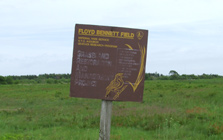
Wave attenuators, marina-like docks that act as buffers against beach-deteriorating waves, are to be installed between 2014 and 2019.
Despite all this technology, though, Jamaica Bay's brightest new hope may be a bivalve that once lived in the 350 square miles of the estuary: the oyster.
A Natural Solution
Oysters last thrived in the Hudson-Raritan Estuary in the early 20th century. Describing the bivalve as a "keystone" species that affects other components of its ecosystem, NY/NJ Baykeeper has championed experimental oyster farming. Every animal can filter nitrogen and pollutants from 50 gallons of water daily. They eat oxygen-guzzling phytoplankton that suffocates the bay. In, addition the beds where the oysters live serve as homes for small marine organisms and the fish that feed on them.
"Right now you can hardly find a live oyster in Jamaica Bay," says Levinton.
Their decline both signifies and intensifies the bay's ailments. Chester Zarnoch, associate professor of natural sciences at Baruch College, and his colleague Tim Hoellein have received funds from the National Science Foundation to study the growth and survival of oysters in the estuary and to determine their potential in restoring it.
Zarnoch says that there has been tremendous growth and evidence of spawning where the bivalves have been re-introduced.
While that is good news, the oysters may not solve the nitrogen problem in the long term. Research has brought to light that oysters, while they do filter nitrogen, they simply store the substance in their bodies and release it back into the environment upon their death. Scientists now hope to harness the oyster's digestive cycle to remove the nitrogen from the water.
"In Chesapeake Bay and Long Island Sound, you can remove nitrogen from the water by removing oysters and consuming them," said Zarnoch. "But we can't consume them from Jamaica Bay because of the amount of bacteria present."
Oyster gardening is still in the beginnings stages of a two-year experiment that will determine whether they will benefit the bay's condition. The next several years will be critical to see if the oysters can once again thrive in the estuary as part of a recovering environment and if the marshes can once again shelter and nourish an authentic mix of native New Yorkers.
This article was written under a partnership between Gotham Gazette and the Baruch College's Department of Journalism and Writing Professions.
Creating a Plan to Connect New Yorkers and Their Harbor
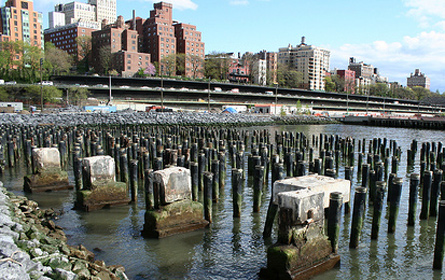
For too many in the New York metropolitan area, our harbor has been a virtual desert, devoid of life and activity for more than a century. New Yorkers around our magnificent estuary have been unable to connect to the water that surrounds them, first cut off by industry, highways and rail and more recently by the lack of a comprehensive vision, adequate funding and coordinated regulatory system for our shore.
This all is starting to change. The literal green shoots of Brooklyn Bridge Park and Governors Island. are the most conspicuous evidence of waterfront renewal. Hundreds of other initiatives throughout the metropolitan area are also underway, less visible but no less important. The entrepreneurial spirit and creativity that are hallmarks for our city are evident at the water's edge from the Rockaways to the South Bronx. Together we are bringing our harbor and waterways back to life.
[For a report on an effort to preserve and improve one part of New York's waterfront -- Jamaica Bay -- go here.]
Citizens have united to clean the water; protect the vital but often overlooked maritime industry; make sailing, paddling and rowing more accessible to the public; support ferry service; and create waterfront parks large and small. Together, all these activists and organizations have formed a unique "Blue Movement" demanding change in how we use and manage this shared and precious resource.
Making WAVES
Mayor Michael Bloomberg has caught and contributed to this civic wave, most recently with his announcement of WAVES (Waterfront Vision and Enhancement Strategy). The heart of WAVES is a new waterfront plan; but more important, like its sister initiative, PlaNYC2030, it is a full court press using all sectors of city government to coordinate and advance efforts to enhance our harbor. This administration realizes the push is just as important as the plan.
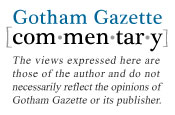
WAVES will certainly benefit from government leadership, but what it needs to succeed is citizen input. Through the spring and summer, the Department of City Planning will be gathering comments and ideas for the waterfronts throughout the five boroughs. New Yorkers should get involved and be specific: What combined sewer outfalls need to be abated; where would be a great places for docks; where can children in your neighborhood get to the water for environmental education; where should a kayak launch be located; what businesses should use the waterways to move goods and get trucks off our roads. To learn how to submit comments for WAVES and to get involved in the outreach sessions, go to http://www.waterfrontalliance.org/projects/cwp. By law, the city's Comprehensive Waterfront Plan produced through WAVES must be completed by Dec. 31, 2010.
The city's effort is a great step forward, but for our harbor more is needed. Too often protracted battles over what can or cannot be built on or near the water have slowed or stopped parks and other waterfront development. The overwhelming bureaucratic morass at the water's edge has prompted many developers, park advocates and maritime businesses to alter or abandon innovative plans.
WAVES provides an opportunity to align our city and state agencies with progressive waterfront policy and waterfront regulation and use all of government's tools -- zoning, incentives, and regulatory reforms -- to coordinate protection and enhancement of environmentally sensitive areas, growth of the water-dependent maritime industry, and creation of great waterfront parks, new docks and more water access.
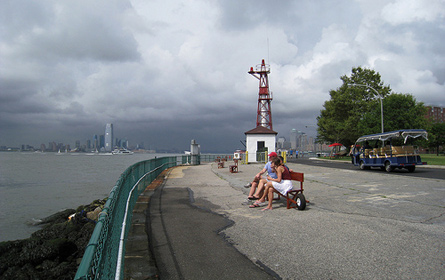
At the same time, the City of New York must reach out to its sister municipalities on the New Jersey side of the Hudson and to the Port Authority of New York and New Jersey as we put together and implement this new comprehensive plan. Fish don't care about boundary lines drawn down the middle of the harbor and neither should we.
A Fair Share
Even with a great waterfront plan and new alignment between the state and city we can’t have a great waterfront without money. This brings us to the greatest challenge facing Bloomberg and all involved with WAVES: ensuring our region receives a fair share of federal funds to support our harbor. Our harbor, known as the Hudson Raritan Estuary in environmental circles, has received the short end of the stick. As noted in a recent letter from Bloomberg and Gov. David Paterson to President Barack Obama, our harbor was allocated $800,000 of federal restoration funds last year, an insignificant appropriation compared to the 2010 allocation of $475 million to the Great Lakes Region. Gateway National Recreation Area, the fourth most visited in the country, is similarly short-changed. Our commercial port suffers from insufficient federal rail infrastructure, forcing 98 percent of the goods delivered in the harbor onto trucks that choke our streets and highways.
What is the cure for this federal disinvestment? The area's Congress members must establish a New York and New Jersey Harbor Caucus to champion our region’s harbor and waterfront needs in the halls of the Capitol.
The very names of our neighborhoods ring with maritime history and the echoes of a lost connection to the water; from Baychester to Bay Ridge, from Port Morris to Port Richmond, these communities and dozens of others beg for a reconnection to the water. Imagine docks in every neighborhood for recreation and education, where kayak, historic vessels and tall ships can more. Envision ferries that can ease commuting, and harbor cruises and sailing ships picking up and dropping off passengers. And imagine the vital Port of New York once again the center of commercial shipping with a growing number of green and blue-collar jobs in its bustling port and maritime industry.
Accomplishing all this will take vision, energy, leadership and money. It will also take the collective effort of everyone who cares about our waterfront's future to be active voices in WAVES and to hold our elected officials accountable for a fair share for our harbor. The result will be a renewed and revitalized Gateway to America, What a legacy that would be for future generations, here, across the country and around the world.
Roland Lewis is president and CEO of the Metropolitan Waterfront Alliance




